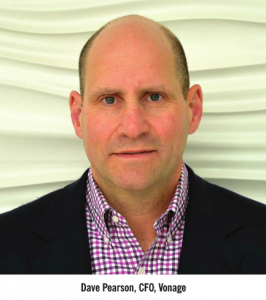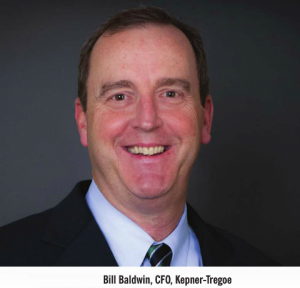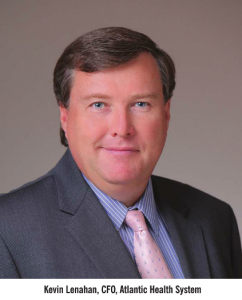As Seen in CFO Studio Magazine Q1 2017 Issue
STIMULATING FINANCIAL GROWTH IN THE FACE OF ECONOMIC UNKNOWNS IS THE KEY TO SUCCESS
Most executives would agree: In order to stay in business and outpace competitors, companies need to grow and expand, regardless of what is going on in the world market, or their own backyard. How that’s accomplished, however, is a “challenge and a good question that may not have one definitive answer,” according to Jason Mulliner, CFO of Edmund Optics, a supplier of optics, imaging, and optomechanical components, based in Barrington, NJ.
Mr. Mulliner spoke on “Driving Domestic and Global Growth Despite Currency Swings and Economic Uncertainty” at an invitation-only dinner discussion attended by CFOs from middle-market companies in the Philadelphia and New Jersey areas. The event was held recently at Morton’s The Steakhouse in Philadelphia and is part of CFO Studio’s Executive Dinner Series.
Mr. Mulliner began the discussion by acknowledging how “economic uncertainty can be very much domestic in nature.” For companies based in the U.S., he said, “there are so many things that can create uncertainty — like what’s going to be the gross domestic product growth for the upcoming year, and what might the Fed do with interest rates?” He continued: “How about the unemployment rate and its effect on the cost of employees?” And, naturally, he didn’t stop short of mentioning the veil of ambiguity that typically surrounds a new president in the Oval Office.
With those questions dangling in the room, Mr. Mulliner then posed the most important one to his fellow financial executives in attendance: “How do you budget and plan for the upcoming year in the shadow of so much uncertainty?” That question was answered with more questions, and an observation agreed upon by all: “It’s a considerable, yet exciting challenge.”
Most companies, Mr. Mulliner noted, begin budgeting for the next year in September, with such calculations continuing until December. Any good plan, he said, “probably needs to be amended every three or four months anyway, which is a good thing when so much is up in the air.”
At a time like this, Mr. Mulliner suggested “rolling forecasting” could be considered a best practice: “You always have a 12-month plan ahead of you, as opposed to working with a plan that is very calendar-year focused,” which forces everyone to be constantly thinking ahead.
While it sounds positive, he called the process of creating a rolling forecast an “arduous, but important task” that takes a huge amount of time and resources, as “every organization within the company has to sit down about once a month to think through the plan and project out.” A fair deal of grumbling is often the result of such “reforecasting,” but Mr. Mulliner opined that “only good can come from repeatedly going back to the drawing board during unclear periods.”
Michael Muccio, Partner at CFGI, a finance and accounting consulting firm with offices in Boston, New York, and Philadelphia, and a CFO Studio Business Development Partner, discussed his dilemma over whether or not to slow hiring in the New York market or change the strategic direction. “Our New York office is experiencing rapid growth, including an increase of more than 200 percent in head count over the last 18 months.” Mr. Muccio said that while there is concern about the growth trajectory of this market, “it’s difficult to pump the brakes and pass up good talent.”
Responsible for growing CFGI’s New York office, Mr. Muccio admitted his nerves were calmed by the overall sense of optimism in the room for sustained growth: “CFOs in attendance felt an economic slowdown or significant change were not likely on the horizon even with a new president, and more of the status quo is expected.”
Globally Speaking
Mr. Mulliner moved the discussion to a global focus. “It’s been a very interesting time, as the U.S. dollar has had one of its largest moves ever in terms of strengthening against all currencies.” However, for global companies based in the U.S., “this has added incredible volatility to their financial statements.”
He explained: “As you’re selling in other countries in different currencies other than the U.S. dollar, you’re basically getting fewer dollars for every foreign currency that you sell, so on your financial statement it looks like you’re selling less or contracting as a company, but that may not be the case at all.”
For companies with both sales and expenses (manufacturing, salaries, etc.) overseas, a shift in the currency can also “artificially take away growth” on their financial statements. Mr. Mulliner said financial instruments like forward hedging contracts can help preserve natural growth, and can remove volatility from the reports. “Such agreements allow businesses to purchase a foreign currency at a pre-established and fixed rate based on the current market.” He continued, “So if the currency moves during the prescribed period in the hedging contract, the hedge will mitigate the actual financial gain or loss occurring in the company resulting from the currency move.” This will decrease volatility in the company’s financial statements, he said, “which is typically a good thing.”
The Bottom Line
In the end, the group agreed with Mr. Mulliner that “if you want to grow, despite currency swings and economic uncertainty, you have to fund growth.” To do this, he said, “Companies typically need banks.”
Elaine Cheong, Senior Vice President and Senior Relationship Manager at Bank of America Merrill Lynch, and a CFO Studio Business Development Partner, offered: “Part of a company’s risk-management strategy should be negotiating with their lenders realistic covenants that reflect earnings fluctuations due to cyclicality of business conditions.”
In terms of a budget plan, Mr. Mulliner said the banks understand that it’s just a plan and it will change, but “they like to see that some rigor, thought, and strategy have been put into it, and that it’s consistent with past performance and you’re not just making things up.”
And he added: “Don’t surprise your banker.” Constant communication and “a good relationship with your banker can help a business weather most any kind of storm.” Whether you know one is coming or not.



